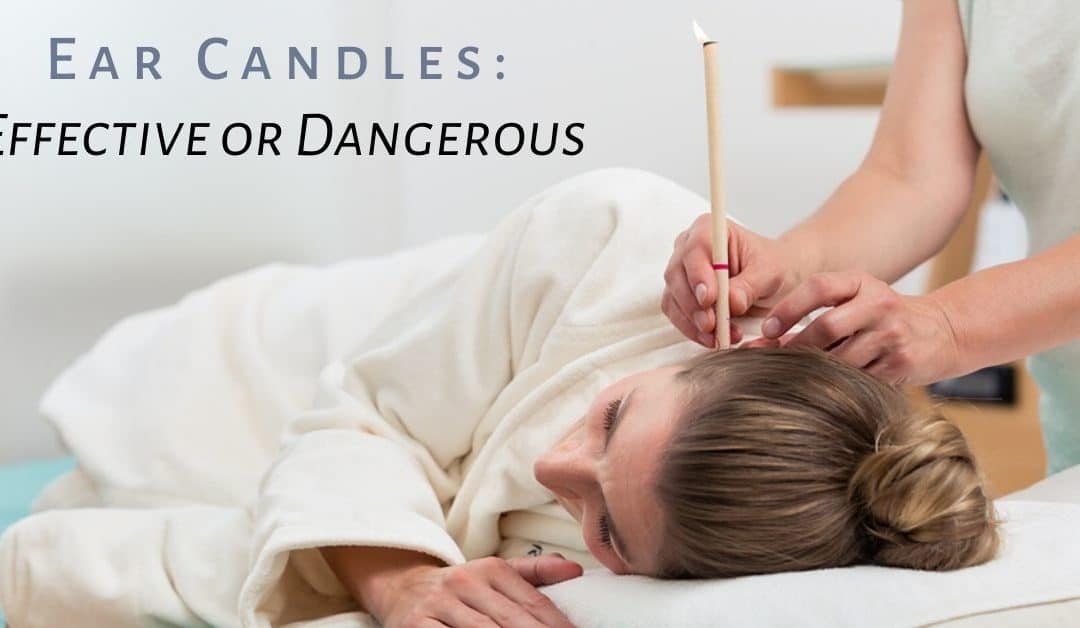Earwax is a sticky, unpleasant, but vital substance in our ears. It helps to trap debris and protects your ear canal from growing bacteria. But if you don’t regularly clean your ears, or if your ears contain just a lot of wax, it may build up and block your ear canal. Naturally, you want to clean the wax from your mouth. But there are correct ways to do that, and some not so accurate.
A technique called “ear candling” is used by some to try to get rid of the wax. We need to be clear that this is not a safe practice. We will explain in more detail in this article.
What is involved in ear candling?
Ear candles are hollow sticks, about 10 inches long. They are made of cotton or linen, tightly wrapped into the form of a funnel, which is then soaked in beeswax.
Here are what’s involved in a session:
- You first lie on one side with the ear facing up to be cleaned.
- The sharper end of the ear candle is typically placed into a hole in a sheet of paper or foil (to trap any wax that drips) and then into the outer ear canal.
- The candle is lit from the other end and held while the candle burns.
- The procedure stops after several minutes, or when the stub of the candle is several inches from your head.
- Using a cotton ball or pad, the outer ear is rubbed away of debris.
- The practitioner cuts across the extinguished candle and shows you the earwax that has supposedly been removed.
Will candling to the ear work?
Ear candling proponents also refer to the wax substance left inside the candle as evidence that the procedure has worked.
But it hasn’t worked. A recent study tested the hypothesis and found ear candles did not remove the and the wax remains consisted of candle wax and not ear wax. Furthermore, in some instances the procedure caused candle wax to fall inside the ear, contributing to the wax issue.
Putting items within your ears can also result in injury. A consumer health alert concerning ear candles was released by the Food and Drug Administration, warning of this. Potential injuries may involve facial burns, ear canals or middle ears, eardrum injury or canal blockage.
How to remove earwax at home
If you have too much earwax, there are safer and more effective ways to extract it.
When you have a shower and dry the outer parts of your ears gently, this is also enough to eliminate excess earwax. However, if your inner ears feel sticky or after doing so, you still have a layer of wax, there are other things you can do to extract the wax safely.
Here is one such method:
- Place baby oil, glycerin, or peroxide in your ear canal using an eyedropper.
- Give the wax a couple of days to soften.
- Tilt your head to one side and slightly pull up your outer ear. Then, gently spray body-temperature water with a rubber bulb syringe into your ear.
- Tip your head to the other side to allow the water to drain onto a towel or cotton pad.
- Dry your ear canal with a towel.
You would need to do that a couple of times before extra earwax falls out. An over-the-counter earwax removal kit can also be bought at the drugstore.
Never attempt to “pick out” earwax with cotton swabs, hairpins, or other devices. You will push the wax deeper into your ear canal, and your eardrum will at risk of injury
When to see a professional
If the above strategies haven’t worked, you may need a professional removal of the earwax. We’ll be able to examine your ear and perform a professional and safe removal of any impacted earwax. Contact us today to set up an appointment.

